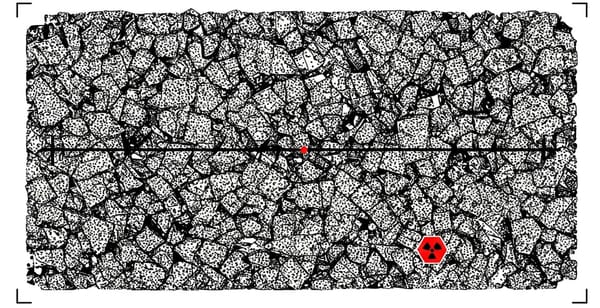Enhancing NaI(Tl) Detectors for Neutron Identification
Discover how advanced signal processing can transform standard NaI(Tl) radiation detectors into neutron detectors—without additional hardware. This breakthrough enhances nuclear security, enabling cost-effective detection of special nuclear materials in real time.
This article explores how common radiation detectors can be improved to detect neutrons, which could help in distinguishing ordinary sources of radiation from dangerous nuclear materials.
Here’s a breakdown of the key concepts:
- Radionuclide Identification Devices (RIDs) and Backpack Radiation Detection Systems (BRDs): These are standard tools used to identify radioactive materials. They're often equipped with Sodium Iodide doped with Thallium (NaI(Tl)) detectors.
- NaI(Tl) Detectors: These detectors are popular because they are relatively inexpensive and provide good energy resolution. When radiation interacts with the NaI(Tl) crystal, it produces light (scintillation) that is converted into an electrical signal.
- Neutron Detection: Detecting neutrons is important for identifying Special Nuclear Materials (SNM) in reactors or weapons. Traditionally, this requires extra equipment or more advanced scintillation materials, increasing the cost.
- The key finding of this article: By using existing NaI(Tl) detectors and refining the processing of their signals, it's possible to achieve reasonable neutron sensitivity without additional hardware. This is achieved through advanced analysis of the signals produced by the detector.
Here's how the refined signal processing works for both fast and thermal neutrons:
- Fast Neutrons:
- Fast neutrons can collide with the nuclei within the NaI(Tl) crystal.
- These collisions create nuclear recoils, which produce signals that can be distinguished from those caused by gamma rays using pulse-shape discrimination (PSD) techniques.
- The researchers used a parameter called "mean time of a pulse" to improve the separation of nuclear recoils from gamma events. This method allowed them to detect fast neutrons with energies above 1.2-1.6 MeV.
- Thermal Neutrons:
- Thermal neutrons are often captured by the iodine nuclei in the detector.
- This capture leads to a cascade of gamma rays with a combined energy of almost 7 MeV.
- Researchers used two methods to identify these events:
- High-Energy Deposition: Identifying signals with energy depositions between 3 MeV and 7 MeV, which are characteristic of neutron captures in iodine.
- Delayed Gamma Emission: Detecting delayed gamma rays emitted from isomeric states of iodine-128 (128I) following neutron capture. The researchers looked for specific time delays between pulses, which indicate neutron captures in 127I. An algorithm decomposing pulse pileups was key to using delayed double- and triple-coincidence events for thermal-neutron detection.
In summary, the researchers demonstrated that by applying sophisticated signal processing techniques to existing NaI(Tl) detectors, it is possible to detect both fast and thermal neutrons without any hardware modifications. This involves analyzing the shape and timing of the signals produced in the detector to differentiate neutron interactions from gamma-ray interactions. The algorithms can be integrated into the instrument's firmware.



